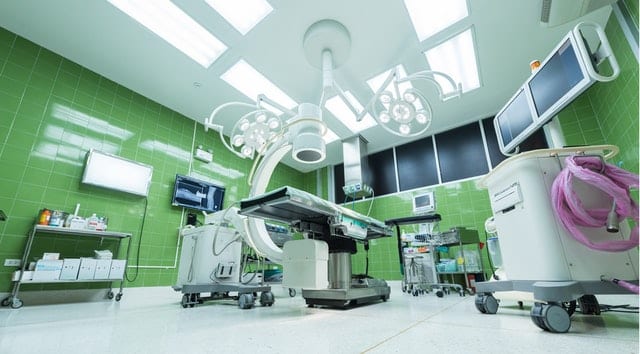With a constantly changing healthcare landscape, maintaining an on-site network is no longer a viable long-term plan for hospitals and clinics. With healthcare systems moving toward a virtualized network, your institution’s IT architecture will also need to adapt to a more sustainable model in order to deliver the best patient care and protect and grow your business.
What’s in Store for the Future of IT Networks?
It wasn’t so long ago that configuring and maintaining a network meant relying on an infrastructure that was composed primarily of hardware. Of course, the consistent need for system updates and repairs or replacement for equipment damage made it not just expensive but entirely inefficient, too. But the current digital landscape of IT networks is growing at a lightning pace — which means we need to leave behind the burdensome networks of the past.
Here’s a brief snapshot, according to network engineers, of what businesses need for more flexible and more adaptive networking — and where IT healthcare networks headed.
Network Virtualization (NV)
Improving the network means separating the physical network equipment from the software so that network functionalities can exist without relying on hardware. This means that businesses can streamline the way they manage their workloads to meet changing business needs. There are two technologies that will do that, ensuring a more virtual computing environment.
- Software-Defined Networking
Software-defined networking is a component of NV. This infrastructure enables a more scalable network by allowing service providers and network engineers to adapt to changing business requirements, all within one centralized control console.
It works like this: Multiple communication endpoints are installed on the same infrastructure. They’re independently programmed and centrally located, which means they’re designed to streamline and maximize traffic flow across the network. If any changes in network demand occur, there’s no need to purchase new network nodes or communication endpoints. Instead, the software can be reconfigured to adjust according to specific needs and fluctuations, making it possible to share capacity.
- Network Function Virtualization (NFV)
NFV is another necessary component for network virtualization that removes the need for specific hardware, such as firewalls, routers, load balancers and XML processing. Instead, it relies on virtualized software, by streamlining each network task in one or more virtual machines and deciding where to execute each. With the no hardware necessary, server capacity becomes scalable depending on changing needs.
Why This Matters for IT Healthcare Networks
From small clinics to large hospitals, every modern healthcare institution has the same priority — to ensure superior healthcare and services while protecting patients and their data. Meanwhile, within the healthcare world, technologies such as automated monitoring, managing network privileges and end-to-end security are rapidly changing. In order to provide superior patient care, healthcare institutions need to keep up. It’s a challenge, though, because many of those same institutions are up against IT hurdles such as outdated networks, computers, software, phones, security and cabling.
And that’s where our free e-book IT for Healthcare: HIPAA Compliance May Be the Least of Your Worries comes to the rescue. We’ll explain everything you need to know about how to make your EHR workflows more efficient, from remote patient/provider conferencing to end-to-end security and more data integration, and so much more. Download it for free here and get your healthcare institution’s IT systems set for the future.
Here at Taylored Systems, we’ve been helping healthcare providers harness the power of digital technology for more than 30 years. We consider ourselves client partners, not merely vendors, which means that the success of your hospital or clinic IT systems is our first priority. When you partner with our trusted experts, we’ll create a strategic and personalized plan to ensure your physicians have everything they need at their fingertips, no matter what your IT needs.

